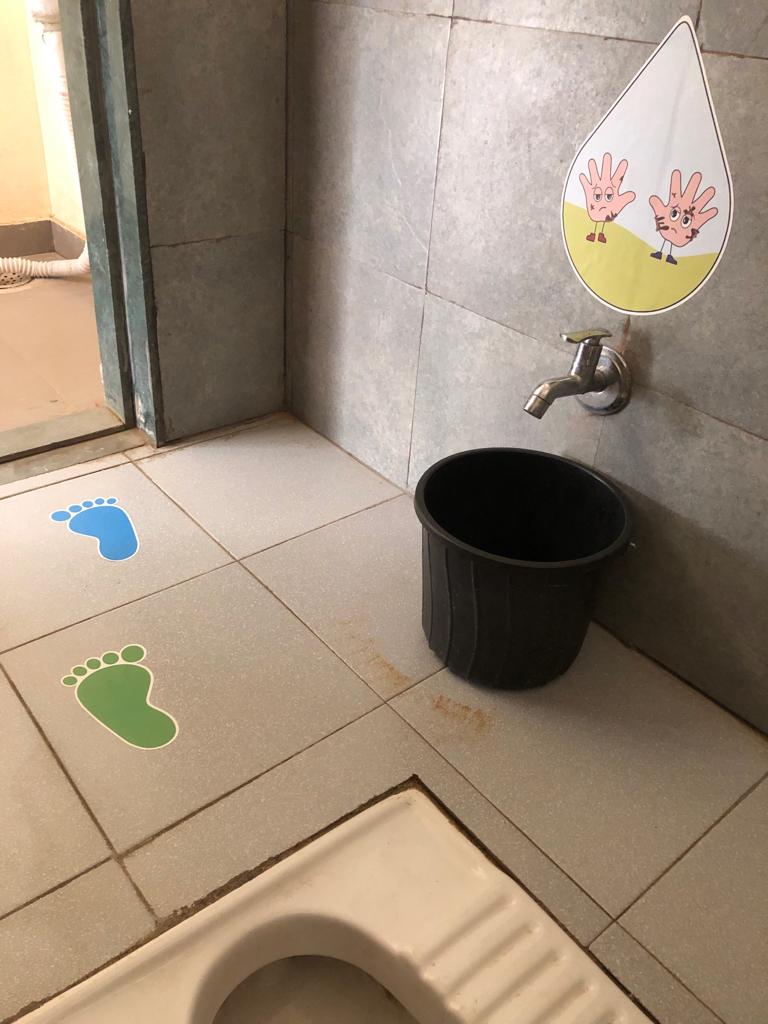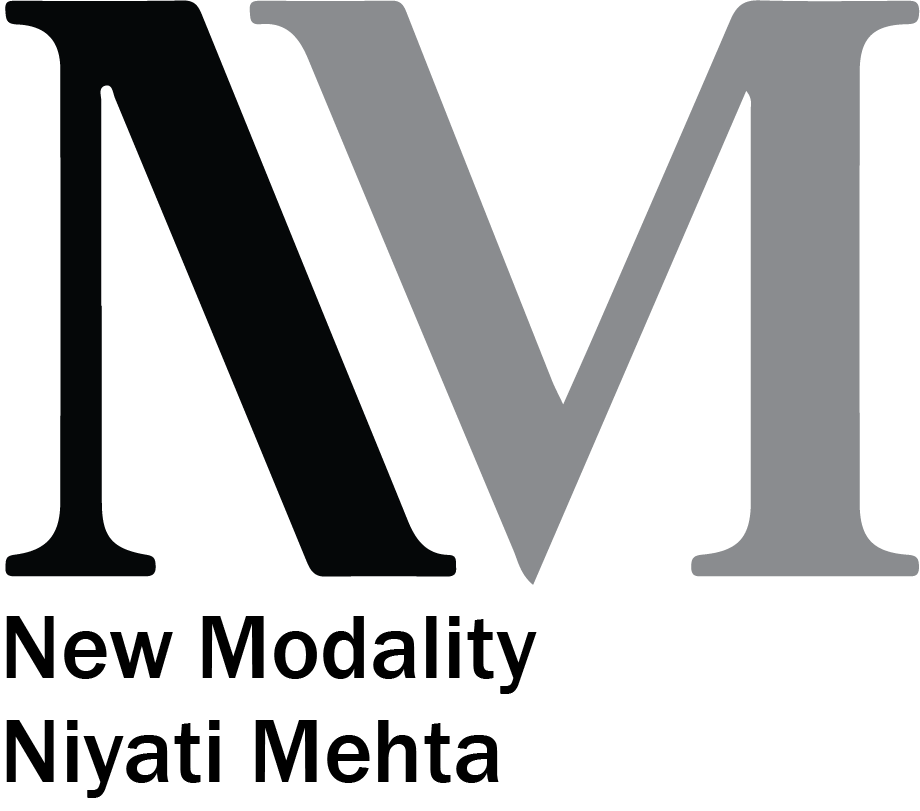CLIENT
PROJECT
HEALTH and WELLNESS
Handwashing, “NAND GHAR” (Cair India)
Jaipur, India
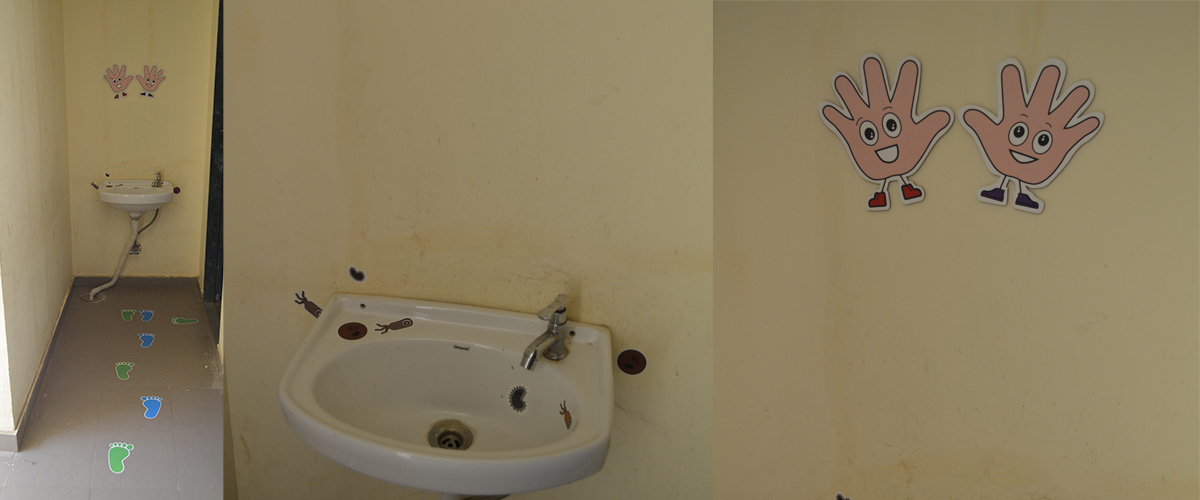
BRIEF
Behavior changes communication for improving handwashing with visual attractive prompts. Nudges are environmental cues engaging unconscious decision-making processes to prompt behavior change. In this proof-of-concept study, we developed an inexpensive set of nudges to encourage handwashing with visual prompts and designs inside the basin/sink, the tap of the toilets after toilet use in five primary schools in Jaipur, India.
1. Children (3-6-year-old) from the village regularly come to the Nand Ghars to attend early childhood education and to play.
2. Since Nand Ghar caters to villages where the emphasis on hand washing is limited because of lack of awareness on the prevention of diseases through hand washing. Traditional approaches to handwashing behavior change are both time and labor intensive and have relied on educational messaging. These messages typically focus on feal- oral transmission and the recognition of health risks associated with germs
Thus, introducing this practice is essential especially:
a) each time after using a toilet
b) before eating
c) after finishing eating
3) This behavior change will:
a) introduce a sense of cleanliness in the children
b) encourage parents to send children to Nand Ghar because the child is falling ill less frequently
c) the child will understand the difference between dirty and clean
d) introduce a feel-good factor in the child to see his/her hands clean
PROCESS
Primary need: Hand-washing safeguards their health Other needs:
1. Food, sanitation, clothing (uniform) to the children
2. A happy environment and atmosphere of learning
3. Children feel safe and secure at Nand Ghars Type of Nudge: Salience, Cognitive Learning, cues, triggers, indirectly directional Benefits:
- Children also make connections between an object or a situation. Interactionist theories emphasize the role of interactions to learn language skills.
- These are non-verbal communications. “They include looks (scowls and smiles), actions (slaps and hugs), silence (warm or cold), as well as words (kind and unkind)” A very silent but a strong adaptive quality.
- Communication contributes to multiple messages, weaving a psychological and cognitive environment that creates a ‘special space’ for a child.
Duration: Piloting stage of testing.
In this pilot study, we tested the potential-visual based nudge interventions to improving hand washing behaviors after toilet, before lunch and use in the pre-kindergarten age group.
Some explorations are shown below.
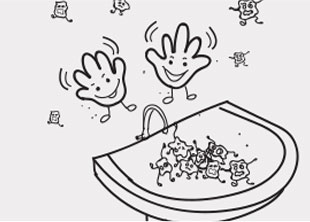
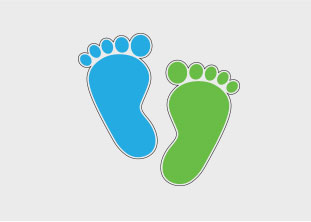
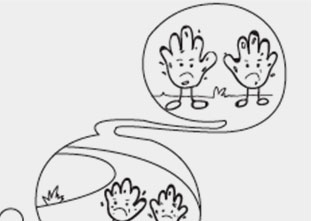
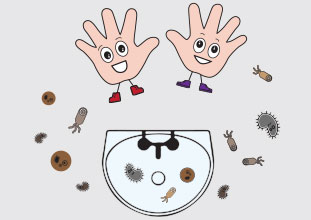
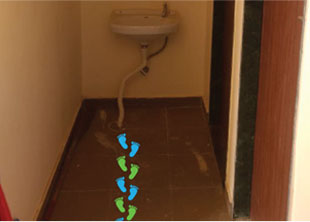
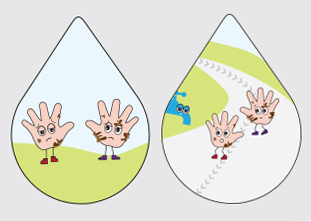
SOLUTION
For direct observations, the trained staff positioned at the locations on sight and the help of teachers on the school grounds completed structured observations of hand washing practices after leaving the toilets, before lunches specifically at both these times if the hands were washed.
3 Nudges implemented being connected and also acts as independent solutions.
- The dirty hands’ visuals ignite a dialogue in the child’s mind showing that their hands are dirty and what would be the next step.
- The following visual behind the doors and stepping out the colorful footprints motivates them towards the wash basin area.
- A beautiful illustration of germs in the wash basin makes them not dislike but creates a dialogue through colors and the bus existing around us.
